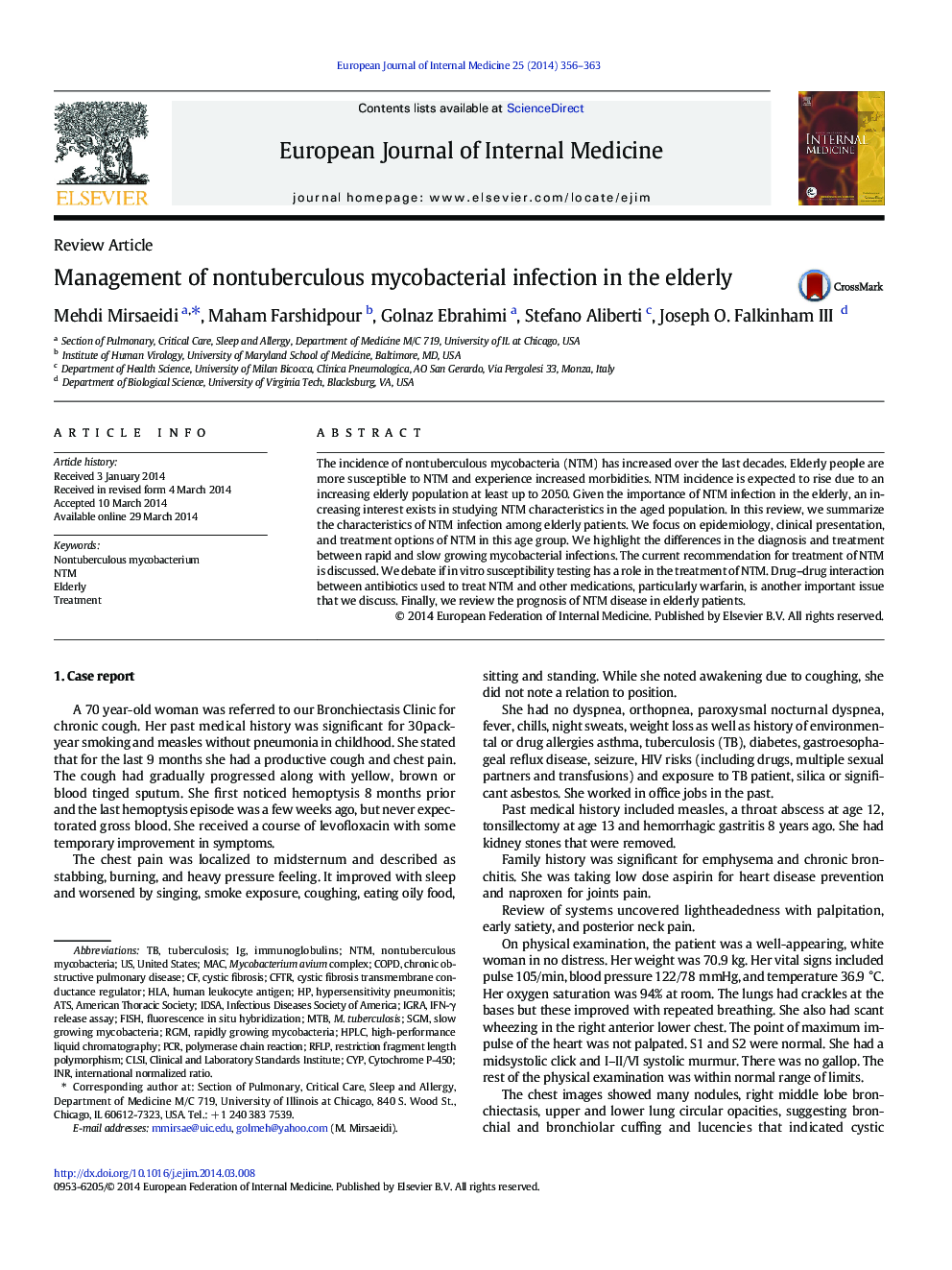| Article ID | Journal | Published Year | Pages | File Type |
|---|---|---|---|---|
| 3466787 | European Journal of Internal Medicine | 2014 | 8 Pages |
•Elderly women are the most susceptible group to NTM.•Lung disease is the most common clinical manifestation of NTM in the elderly.•Acid-fast microscopy and culture are the most important methods to diagnose NTM.•Clinical data and NTM species should be evaluated before starting treatment.•Drug–drug interaction is an important issue in the elderly.
The incidence of nontuberculous mycobacteria (NTM) has increased over the last decades. Elderly people are more susceptible to NTM and experience increased morbidities. NTM incidence is expected to rise due to an increasing elderly population at least up to 2050. Given the importance of NTM infection in the elderly, an increasing interest exists in studying NTM characteristics in the aged population. In this review, we summarize the characteristics of NTM infection among elderly patients. We focus on epidemiology, clinical presentation, and treatment options of NTM in this age group. We highlight the differences in the diagnosis and treatment between rapid and slow growing mycobacterial infections. The current recommendation for treatment of NTM is discussed. We debate if in vitro susceptibility testing has a role in the treatment of NTM. Drug–drug interaction between antibiotics used to treat NTM and other medications, particularly warfarin, is another important issue that we discuss. Finally, we review the prognosis of NTM disease in elderly patients.
